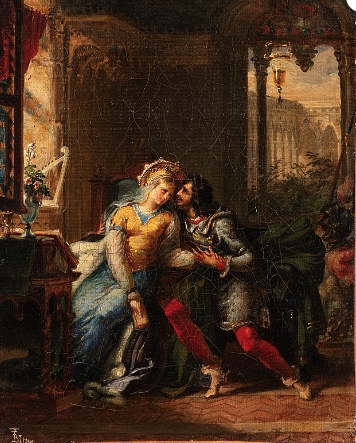Romance and the Natural World
by Margaret Brodeur
How Sir Thomas Malory Uses Springtime to Represent Courtly Love in The Knight of the Cart
Sir Thomas Malory uses nature to set the stage and depict the romantic and sensual relationship between Guinevere and Lancelot. Malory begins his piece by identifying the time of year. “The month of May was come, when every lusty heart beginneth to blossom and to burgeon. For, like as trees and herbs burgeoneth and flourisheth in May, in like wise every lusty heart that is any manner of lover springeth, burgeoneth, buddeth and flourisheth in lusty deeds.” (51, King Arthur and His Knights) Malory’s tone is hopeful and encourages a nonjudgmental outlook on the lover’s relationship. Although Guinevere is married to King Arthur, she’s in love with Lancelot. Their relationship is the epitome of courtly love, which involves a burning desire between two people of high rank. Like the springtime, the love between Lancelot and Guinevere offers a reprieve for both lovers. May is a time of rebirth and change as described by Malory. Similarly, Guinevere is given a second chance through her relationship with Lancelot. Their love is improper and scandalous from our modern-day perspective, but Malory allows us to see through a different lens. One where the queen is clearly trapped in a loveless, passionless marriage. In this way, her marriage is like winter. She’s isolated and numb, without the opportunity for escape. Her relationship with Lancelot thaws her icy state and makes way for springtime.






